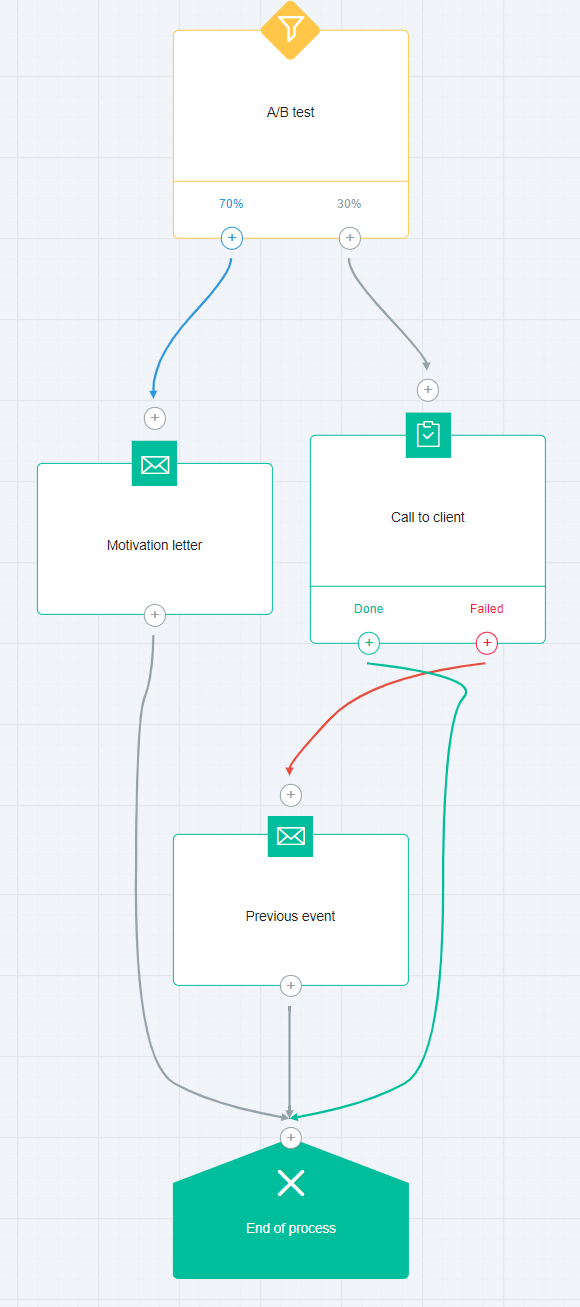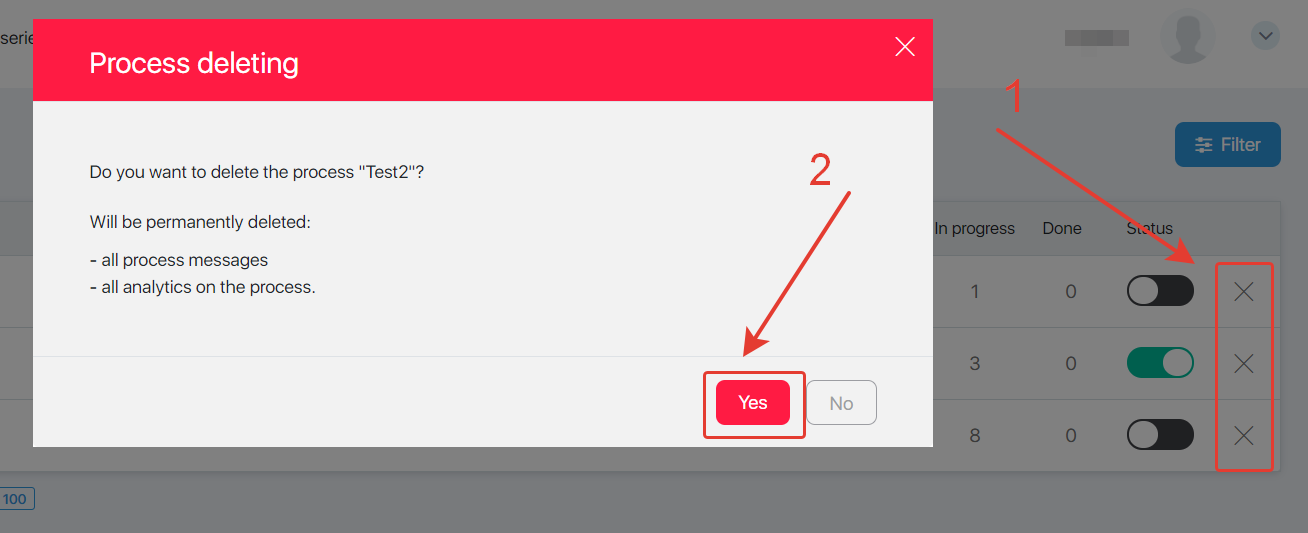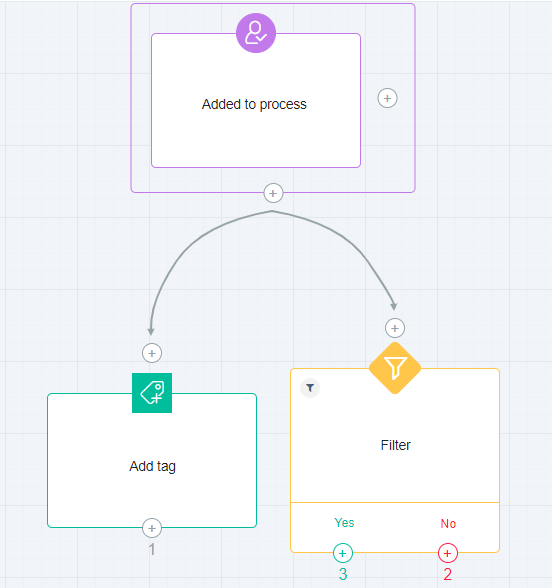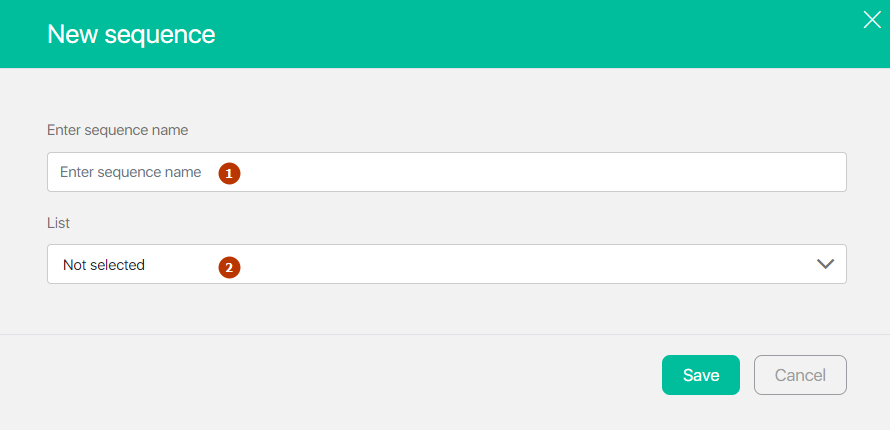Content
What are the Sequences for?
Sequences define a variable chain of action for a lead, which will run for a subscriber of a particular list provided a lead meets one of the conditions (triggers/actions). These sequences can segment the database, flexibly adjust the sales funnel.
The sequences have a wide range of the tools and a visual editor, which make the process of making the logical sequences easy and pleasant.
Let us describe some applications of this tool.
Case #1: a subscriber opens a letter — А/B testing for another letter.
Once a subscriber joins a list, he/she will automatically receive a letter. If a subscriber opens it, then he/she is sent another letter. The screenshot shows that the next letter is sent with А/B test to understand which letter is the more conversional. If a subscriber does not open the letter, he/she will not receive further letters in this process.

Case #2: a subscriber opens a page — a letter is sent.
A trigger “Visited page” can send another letter to a lead. The letter will be automatically sent once a lead of this list opens a page specified in a trigger.
Case # 3. If a client processes the order, then he/she may be sent a motivating letter (in 70% of all cases), or a task for call-center to bring the client to purchase (30% of all cases) will be automatically generated.
This case can test two different schemes to work with the clients and to identify the best one — live communication over the phone with call-center staff or sending a standard letter persuading to buy a product.
The case with a screenshot illustrates two different schemes to manage clients.
The left path of А/B testing: once an order is processed, clients are sent a motivating letter, and that’s it.
The right path of А/B testing: once an order is processed, call-center staff receives a task to contact a client and to sell. If this call is successful, the process is completed. If the call is unsuccessful, the client will be sent a letter with an overview of the previous event.

Case #4. Fully-fledged sales funnel – from subscription to order processing.
What shall we do? We’ll turn the cold clients into hot ones by sending mailshots with free useful recommendations, specify the most interested clients and bring to the purchase the ones who do not process the order yet. This is how it should look like:

Let us find out more about this step.
The first block, which is also called a starting block, is automatically generated, which means that a user has subscribed to a list (group).
A block “Warm letter #1”. Message Constructor or Visual Editor helps you automatically create a letter. Follow the usual procedure to set the delays and restrictions. The flow-chart above illustrates the whole process to turn a cold client into a warm one.
We assume the final letter in this sequence will contain a link to generate an order to pay for a product.
“Visited landing page from a letter” is the next step. If it happens, we believe a client gets interested in the product. Therefore, we are interested as well. Let’s move to the next step. By the way, you can define an address of a particular page or several pages in this block, consider the link parameters (for example, a link with a particular promo tag) or neglect them.
“Order processing” is the next block-trigger. Let’s define 1 day delay in its settings. It works like this: if the order has been generated, then the system moves to the next step immediately. If the order is not generated, then the system waits for 1 day.
We can try different scenarios dependent on the client’s actions. If the order has been processed, then our target is reached. We remove a client from a “warm” list (or you name it) and finish the process (the sequence).
However, if a client does not generate an order within 1 day, then we try to motivate him/her. Our case uses a block with A/B testing. A motivation letter is sent to a half of the potential clients, while the other half of the clients receives a call from call-center team with a discount offer. If the call is successful, the process comes to an end. If a client does not answer the phone, he/she is sent the final sale letter with a discount coupon.
By the way, a block type “Task” (“to bring client to purchase”) may have several exits. The options are “Call back later”, “Offer another product”, and any other alternatives.
These are just some examples to apply the processes, however, all scenarios are not limited by these ones. The sequences can be customized to your needs.
How to add a sequence?
To configure a sequence, move to “Campaigns” — “Sequences” and click “Add a sequence”.

How to name a sequence?
Every new sequence requires a name and a list of leads which is the target for this sequence. Next click “Save”.
- enter a name for a sequence
- select a list of leads
Key elements of the section
The main page of the subsection has “Filter” and “Add a sequence” buttons. The main part of the screen shows a list of already created sequences, the number of activated sequences, the number of leads for a sequence and the number of leads with finished sequences, enable/disable bar and a delete button.
- Adding a new sequence.
- The choice of a sequence according to a certain criterion.
- Created sequences.
- The number of times a sequence runs for one contact.
- The number of contacts in a sequence.
- The number of contacts which finished a sequence.
- Sequence status (enabled/disabled).
- Delete sequence.
How many times will a sequence run for one lead?
A sequence can run one time or any (unlimited) number of times both simultaneously or not simultaneously.

Let’s look at an example.
Starting trigger in a sequence – “Joined list A”.
If the sequence should run only once for a lead, then a lead involved by a trigger into the sequence will not get into this sequence one more time when the same trigger is activated.
If a sequence runs an unlimited number of times for one lead, then a lead in this sequence will join this sequence every time when the trigger is activated (for example, a lead unsubscribes and subscribes to this list again).
However, a sequence can run for more than one day for a lead, therefore, you can restrict the leads with the unfinished sequence to join this sequence again. To do this, select “any number of times if not in progress”.
How to edit a previously created sequence?
Click the name of the created sequence to edit it.

How to disable a sequence?
To disable a sequence, slide a bar opposite the required sequence.
(Green background — enabled, black — disabled).

How to delete a sequence?
To delete a sequence, click a cross icon opposite the required sequence. Once deletion of the sequence is confirmed, all information about it will be deleted.

Please be aware that sequence management is similar to Processes management.
Sequences of letters are the process with only one starting trigger — Subscribers list (a list is defined when a sequence is created), and this trigger cannot be deleted or edited.
If the sequence blocks have leads waiting to perform an action, their number will be displayed in the outputs of the blocks.




